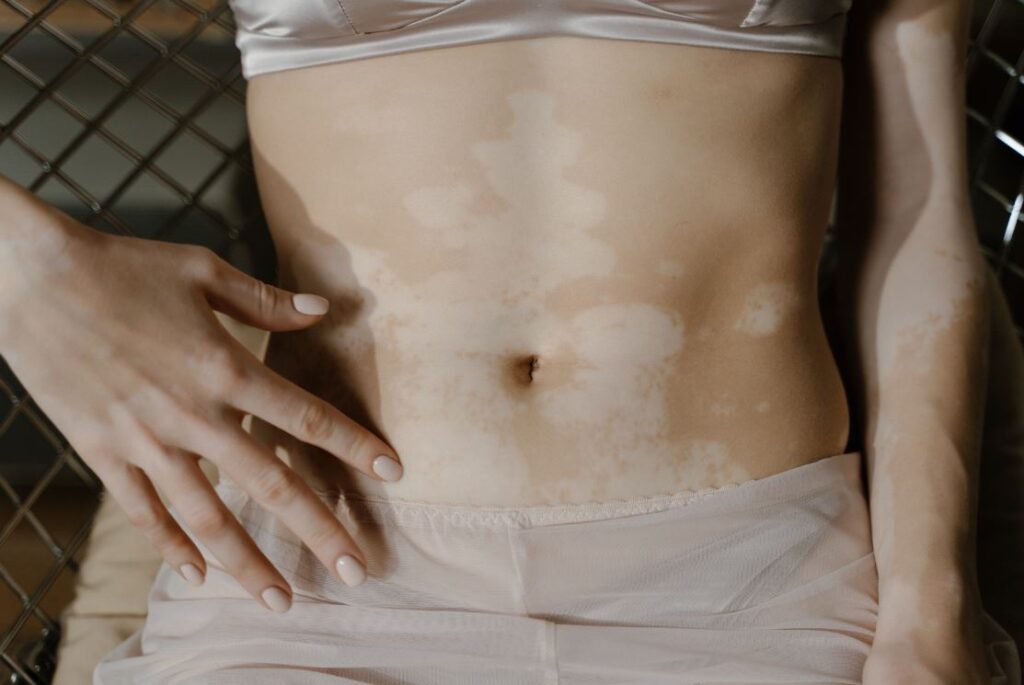
You may be asking yourself what makes vitiligo worse. In this article we’ll discuss what causes vitiligo and what can help to make it less severe. Here are some foods to include in your diet. They contain anti-inflammatory properties and phytochemicals. Beta-carotene, antioxidants, and phytochemicals are also good foods to eat. In addition, they may improve the condition of your skin.
What exactly is vitiligo?
With this problem the skin is affected in many ways. Initially, it can start as a white or pale patch of skin, with irregular edges. Over time, this condition may progress to affect other body areas, such as the lips, genitals, elbows, and knees. Darker people are more likely to be affected. The skin color changes can also be caused by the lack of pigment called melanin in the iris.
Having vitiligo can make you susceptible to other autoimmune diseases, which cause the body’s immune system to attack healthy skin. You may experience low self-esteem due to the discoloration. You may even experience rude comments from people who don’t understand or accept your condition.
If your self-esteem suffers, it can lead to depression and anxiety, which are serious problems. Thankfully, there are several ways to cope with it, such as joining a support group.
Because vitiligo is a progressive skin disease, if left untreated, the discolored patches will grow larger. If left untreated, it can be permanently disfiguring. Although vitiligo can be prevented, there’s currently no cure for this skin disease.
Vitiligo can be a difficult and frustrating skin disease to live with. If you’re suffering from it, you’ll want to know what makes it worse.
How to prevent vitiligo
If you are looking for information on how to prevent vitiligo, you’ve come to the right place. This article will discuss some of the best ways to protect yourself from the condition and prevent it from progressing.
The key to preventing this problem is to understand the symptoms, which may be triggered by a number of different factors, including exposure to sunlight and autoimmune diseases. In addition to avoiding these factors, you should also limit your exposure to the sun and to harsh chemicals.
One of the best ways to protect your skin from sun damage is to avoid tanning beds. These machines emit harmful UV rays, which can lead to skin cancer and sunburn. Additionally, tanning may make your patches more noticeable because it increases the contrast between your skin’s natural color and the light patches.
To conceal the patches and prevent future occurrences, you can use a waterproof concealing cream. Another option is to use a skin dye. This substance is a synthetic color that can last longer than self-tanners. You can get a dermatologist’s advice on the best skin dye to use.
The best way to avoid vitiligo is to eat foods rich in antioxidants and phytochemicals. You can also add turmeric to your diet if you have a severe case. You can also consume ginger in powder form.
Adding these foods to your diet may prevent the progression of vitiligo and even treat some symptoms. Just be sure to avoid sunburn if you have it, as this can worsen the condition.

How vitamin D3 cured my vitiligo
A new study published in Dermato Endocrinology shows that high doses of vitamin D3 can completely reverse the loss of pigmentation in the skin of patients with vitiligo. The researchers gave vitamin D3 to 16 patients with this kind of ailment for six months.
Before the study, all of the patients had low levels of vitamin D, but after the treatment, 14 patients saw a 25 to 75-percent repigmentation of their skin.
Corticosteroid cream is a common treatment for vitiligo and may return some color to affected skin. While it is generally effective in early stages, corticosteroid cream takes several months to see results.
The cream may have unwanted side effects, including skin thinning and streaks. Some people may opt for a milder form of the treatment. For those who have extensive patches of discolored skin, corticosteroid pills may be recommended.
The results of vitamin D study and vitiligo
Despite the mixed results, the results of the study are promising. Despite the mixed results, the results showed that vitamin D supplementation cured my vitiligo. Although vitamin D deficiency is not considered to be a cause, a lack of it can certainly increase your risk of developing the disease.
However, there is a lot of controversy surrounding vitamin D and vitiligo. In one study, Saleh et al. reported that patients with vitiligo had lower than normal serum levels of vitamin D. Although this study contradicts the findings of the current study, Ustun and Karaguzel also found no correlation between vitamin D levels and the areas of the body affected by it.
Fortunately, there are many benefits to using vitamin D to treat vitiligo. It has a significant effect on melanocytes and keratinocytes, and increases tyrosinase activity and melanogenesis in vitro. Vitamin D analogs also inhibit the expression of TNF-a and TNF-g, two genes implicated in vitiligo. Furthermore, the active form of vitamin D is linked to decreased apoptosis, and is associated with enhanced repigmentation.
If you liked the article, please donate!
